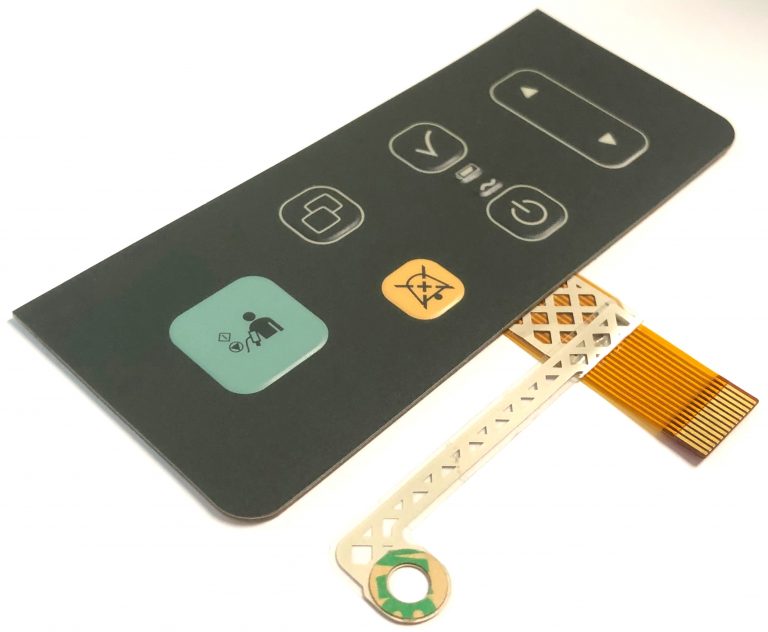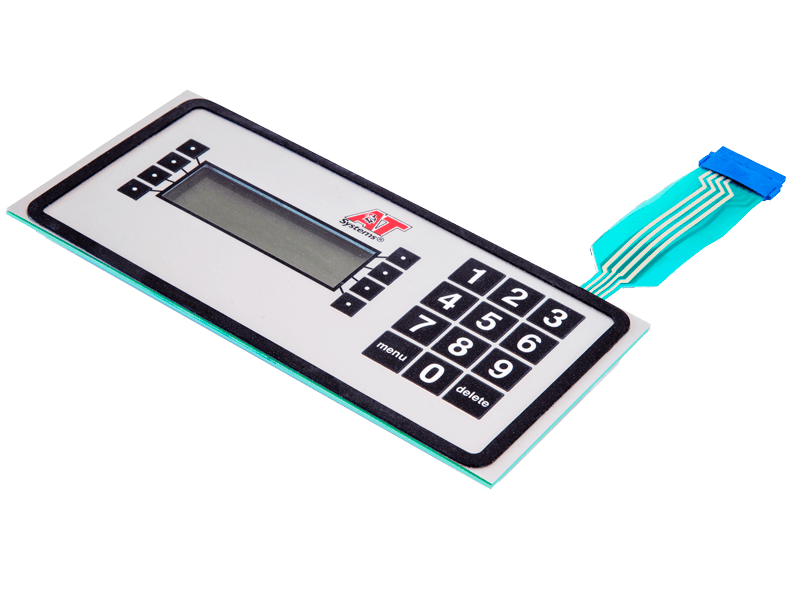A good membrane switch manufacturer offers flexible design options for unique applications.
A good membrane switch manufacturer offers flexible design options for unique applications.
Blog Article
Everything About Membrane Layer Change: Comprehending Its Style and Functionality
When you believe regarding the control user interfaces in contemporary tools, membrane buttons often come to mind. Let's discover what sets membrane switches over apart from various other control systems.
What Are Membrane Switches?

Membrane layer switches can additionally be customized regarding shape, size, and graphics, permitting suppliers to develop special user interfaces customized to specific items. Generally, membrane layer switches play a significant role in boosting customer experience throughout a wide range of applications.
Just How Membrane Layer Changes Job
When you press a trick on a membrane switch, it activates a simple yet reliable system. The leading layer, typically constructed from adaptable product, pushes down onto a conductive layer beneath it. This activity bridges the space between conductive traces, completing an electric circuit. As quickly as the circuit closes, it sends out a signal to the device's controller, which translates your input.
You'll see that the tactile responses differs based on the button layout, offering either a soft click or a much more pronounced reaction. When you release the secret, the membrane layer go back to its original setting, reopening the circuit and quiting the signal. This procedure takes place nearly instantaneously, making sure a responsive user experience.
Membrane layer buttons are preferred due to their longevity and resistance to dirt and moisture, making them optimal for various applications, from family devices to medical gadgets. Recognizing this operation helps you appreciate their widespread use.
Key Elements of Membrane Layer Buttons
Understanding the essential parts of membrane layer switches is essential for understanding their capability and style. At the core, you'll discover the visuals overlay, which offers the aesthetic interface for users. Below that, there's a spacer layer that separates the circuit layers, making certain that they do not make contact up until pushed. The circuit layer is where the magic takes place; it includes conductive traces that complete the circuit when you press the button. An additional vital aspect is the sticky support, enabling the button to comply with surface areas securely. Ultimately, the protective layer guards versus environmental aspects and wear, prolonging the switch's lifespan. Each component plays a significant function in ensuring trustworthy efficiency and user interaction. By comprehending these parts, you'll obtain understanding into how membrane switches run and their value in various applications.
Materials Made Use Of in Membrane Layer Switch Design
The efficiency and sturdiness of membrane layer changes greatly rely on the materials made use of in their layout. You typically run into polyester and polycarbonate as main substrates because of their superb strength and adaptability. These materials withstand scrapes and chemicals, making them perfect for demanding atmospheres.
The conductive layers typically use silver or carbon, selected for their reliability and conductivity. membrane switch manufacturer. Silver supplies premium performance, while carbon is an economical option. For the overlay, you could consider a matte or glossy surface, relying on your visual demands and customer experience
Make specific to pick adhesives that hold up against environmental factors like temperature and moisture. Selecting the right products will ensure your membrane button stands the examination of time.
Style Factors To Consider for Membrane Buttons
While designing membrane layer switches, it's crucial to take into account various variables that affect their functionality and individual experience. Begin by concentrating on the design and button dimension; make specific they're intuitive and very easy to navigate.
Do not neglect the visuals layout; clear labeling and color contrast are considerable for exposure. Validate your design accommodates ecological variables, like moisture or temperature level variations, which might influence efficiency. Lastly, bear in mind the value of screening prototypes with real users to collect responses and make necessary changes. This iterative process aids you fine-tune the style, verifying it satisfies both practical and visual needs successfully. By carefully taking into consideration these components, you'll produce a membrane layer switch that boosts usability and contentment.
Applications of Membrane Layer Buttons
Membrane buttons are functional components discovered in different applications, from industrial equipment to consumer electronics. You'll see their effect in equipments that need resilient user interfaces and in gadgets that take advantage of sleek styles. Understanding these applications helps you appreciate the performance and practicality of membrane layer switches in day-to-day innovation.
Industrial Equipment Usage
When you're looking to enhance the performance of commercial tools, membrane buttons use a reputable solution that combines longevity with straightforward design. These switches are excellent for extreme settings, offering resistance to dust, moisture, and chemicals. You'll locate them in control panels for manufacturing equipments, HVAC systems, and medical gadgets, where precision and responsiveness are important. Their reduced account indicates they fit perfectly into different devices, saving valuable room while maintaining simplicity of usage. With personalized graphics and backlighting alternatives, you can develop an user-friendly user interface for drivers, enhancing efficiency and safety and security. And also, their lengthy lifespan minimizes maintenance costs, making them a smart investment for your industrial applications. Embrace membrane buttons to streamline your operations and enhance overall efficiency.
Consumer Electronics Combination
In the domain name of consumer electronics, membrane layer switches play an essential role in enhancing individual interaction and device performance. Membrane buttons also assure durability and resistance to dirt and dampness, extending the life-span of your electronic devices. By selecting membrane layer buttons, you boost not just the capability yet additionally the design of your tools, making everyday communications smooth and enjoyable.
Benefits and Negative Aspects of Membrane Layer Buttons
While membrane layer switches provide a series of advantages, they also come with some downsides that you must consider. One substantial benefit is their small design, making them ideal for space-constrained applications. They're also economical, offering a resilient remedy with a reduced important site production expense. Additionally, their seamless surface area is very easy to clean, boosting hygiene in atmospheres like medical facilities.

Nonetheless, there are negative aspects. Membrane switches can have a much shorter life expectancy compared to mechanical switches, specifically under heavy use. They can likewise be less tactile, which could affect individual comments throughout operation. If harmed, fixing them can be difficult and commonly requires complete replacement. Ultimately, their sensitivity to extreme temperature levels and ecological problems might restrict their performance in certain setups. Balancing these advantages and disadvantages will certainly aid you establish if membrane layer buttons are the right fit for your project.
Frequently Asked Concerns
For How Long Do Membrane Layer Switches Over Commonly Last?
Membrane switches over usually last between 5 to one decade, depending on use and ecological problems. You'll wish to review factors like wear, exposure to wetness, and temperature level fluctuations to gauge their web link durability effectively.
Can Membrane Switches Over Be Personalized for Certain Styles?
Yes, you can customize membrane layer switches to fit particular styles (membrane switch manufacturer). You'll have the liberty to pick shades, forms, and designs that match your project's demands, guaranteeing they mix effortlessly with your total visual
What Is the Price Array for Membrane Layer Switch Production?
The expense array for membrane layer switch production normally falls in between $1 and $10 per system, relying on elements like layout complexity, quantity, and materials. You can get quotes from manufacturers to discover the very best option.

Are Membrane Layer Changes Water Resistant or Resistant?
Membrane layer buttons can be made to be water-proof or immune, depending upon materials utilized and building techniques. If you need them for wet atmospheres, guarantee you define those needs throughout the layout procedure.
How Do Membrane Layer Switches Compare to Typical Buttons?
Membrane buttons are generally thinner and a lot more adaptable than conventional buttons, using a smooth layout. They're usually easier to clean up and integrate, however may not provide the tactile feedback you're utilized to with mechanical choices.
Final thought

Report this page